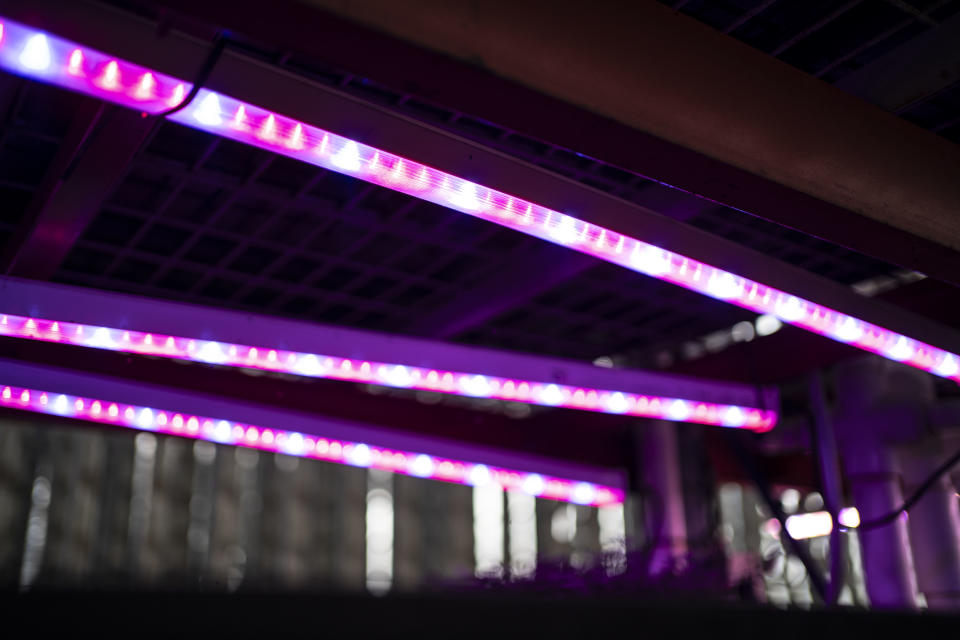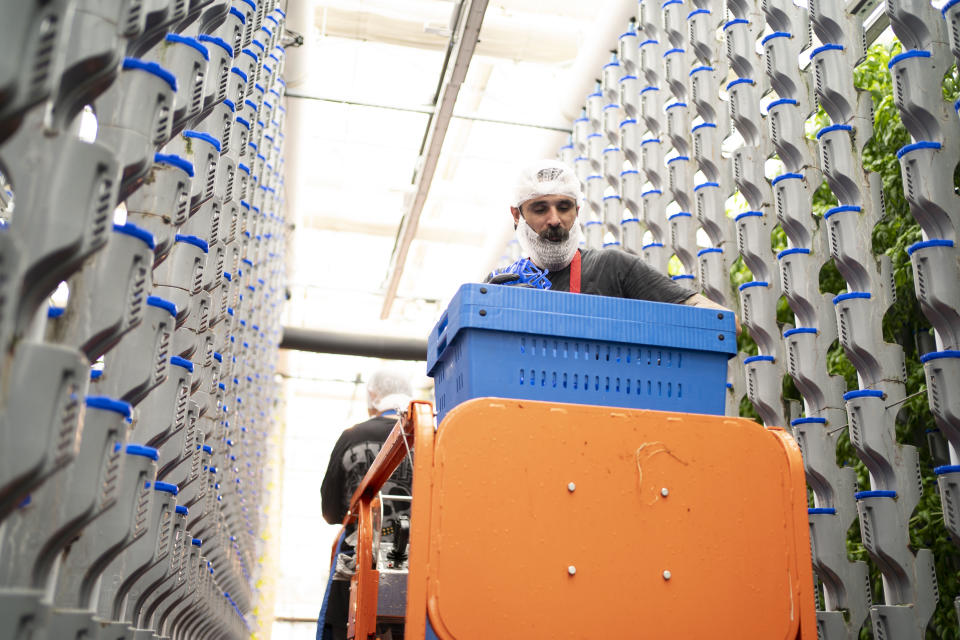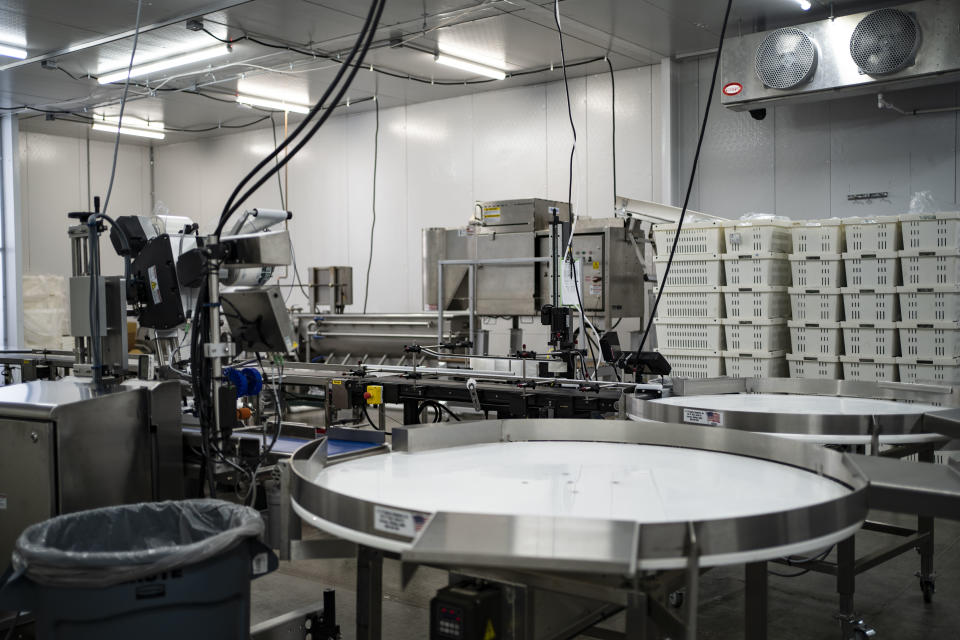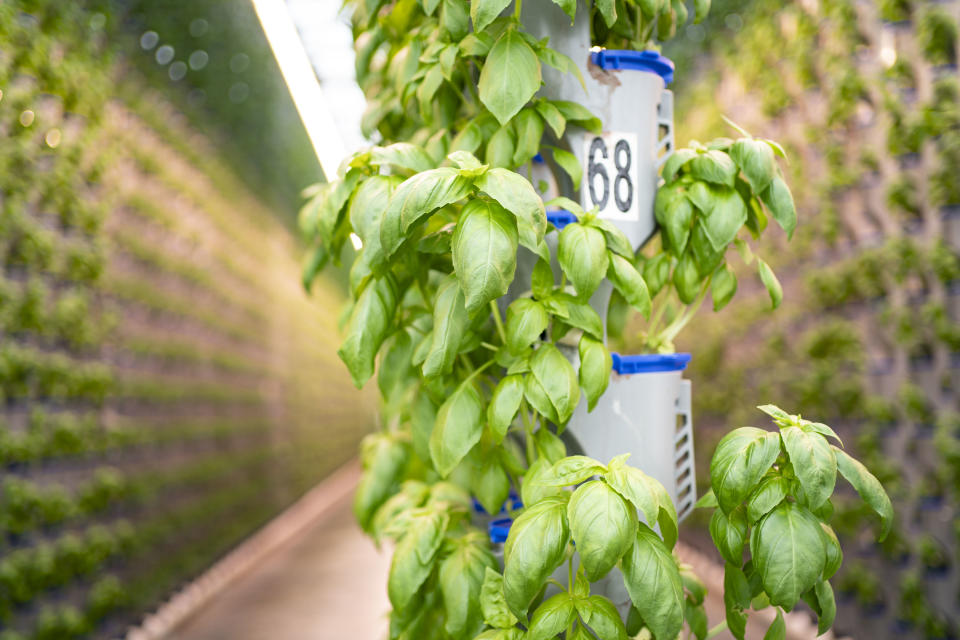Indoor farms are remaking the produce market — at a cost to the planet
No one would argue that the climate in North Texas is ideal for growing lettuce, a crop that thrives when there’s a chill in the air. But the region’s broiling summers are of no concern to Eddy Badrina, chief executive of Eden Green Technology, a vertical, hydroponic greenhouse company just outside Dallas.
The company, which sells its leafy greens to Walmart, controls every aspect of a plant’s life. At its 82,500-square-foot facility, cool air is pumped in to create the ideal microclimate around each head of baby butterhead and romaine lettuce. Seven miles of pipes deliver nutrient-rich water. Although natural light floods the space - setting it apart from vertical greenhouses that block out the sun in favor of controlled lighting - additional LED lights obey a programmed algorithm directing them to shine just the right amount of light on each plant.
“We’re pretty agnostic to the outside environment,” Badrina said.
As the effects of climate change intensify, bringing more severe droughts, flooding and pest infestations, some growers are wresting control of their crops away from nature. Huge high-tech greenhouses and smaller vertical farms - windowless warehouses that typically grow plants stacked in trays - hold the promise of letting farmers grow almost anywhere.
But all that control comes with an environmental cost. Inside these facilities, farmers are creating the perfect growing conditions with power generated mostly by burning fossil fuels, and lots of it.
“It’s a lot of the same technologies you’d see in a building for human comfort, but being put to use for plants,” said Jennifer Amann, senior fellow in the buildings program at the American Council for an Energy-Efficient Economy, a nonprofit focused on reducing energy waste. “There’s extraordinary water efficiency in these facilities, but energy is really the Achilles’ heel.”
In colder climes, indoor farm operators heat their greenhouses with natural gas or propane, since these fossil fuels are often the cheapest option. Vertical farms are a smaller slice of the market, but they typically consume much more electricity than greenhouses to replace natural sunlight and to power cooling and dehumidifier systems.
Nationwide, the industry is on the rise. Between 2017 and 2022, land used to grow vegetables and herbs in greenhouses increased by more than 20 million square feet, an 18 percent jump, according to the federal government’s latest agriculture census, released last month. Though crops grown in indoor farms are still a small percentage of what’s on grocery shelves, they are making inroads in certain parts of the country. In New England today, about 20 percent of the leafy greens for sale come from controlled-environment agriculture outfits.
Energy use in the industry varies widely depending on greenhouse size and what crops are being grown. A study of 12 indoor farms by the nonprofit Resource Innovation Institute found that five of them used as much energy per square foot as a hospital. One vertical farm, an outlier, was guzzling as much energy per square foot as a data center.
These companies advertise their produce as safer, more nutritious and fresher than field-grown produce, since their operations typically skip pesticides and are within a few hours’ drive of major cities. They boast of using one-tenth of the water, a claim backed up by independent research. But they don’t often talk about their energy use; most states don’t require them to report it, and researchers said many are reluctant to share this data.
With detailed energy-use information hard to come by, quantifying the carbon footprint of indoor farming is tricky. Researchers studying the industry’s greenhouse gas emissions have reached contradictory conclusions.
A comparison of studies tallying the emissions of greenhouse-grown and field tomatoes suggests that those grown indoors had a carbon footprint six times as large. But a paper summarizing research on lettuce growers’ emissions reached a different finding: Carbon pollution from indoor farms was lower than that of traditional farms because they were closer to their buyers and didn’t have to ship their salad greens hundreds or thousands of miles in diesel-burning trucks.
But setting aside that debate, experts said indoor farms in the United States could be more efficient.
Gretchen Schimelpfenig, a civil engineer who has worked to track indoor farms’ energy use, said many American greenhouses could cut their energy use in half. Dutch greenhouse technology has proved that this is possible, she said, but in the United States, there’s little pressure on indoor food growers to do things differently.
“We have had the pleasure of very low natural gas prices for some time, and that’s why we’re seeing controlled agriculture facilities get built in Montana and Wyoming and Texas,” Schimelpfenig said.
Other states want in. At a time when consumers are seeking more year-round vegetables and berries, and many still have grim memories of the pandemic’s supply-chain crises, states are courting indoor farms that can be built wherever there’s a market for fresh produce.
Pennsylvania Agriculture Secretary Russell Redding said the state has created a “concierge service” to ease the permitting process and help indoor-farm operators with site selection. His agency is focusing on locations in the Lehigh Valley and the south-central region, where there’s proximity to major energy infrastructure and desirable markets in New York, New Jersey and D.C. Some of the state’s top universities are working on technology to speed automation inside vertical farms and greenhouses, he said, while its colleges are training workers for jobs in these facilities.
One of Pennsylvania’s selling points is its abundance of energy, most of which is generated by burning natural gas.
“These facilities are energy-intensive,” Redding said, “but Pennsylvania is the second-largest net energy supplier to the nation, and we think that’s a differentiator for us.”
Virginia is also eagerly anticipating a boom in indoor farming. According to state officials, the industry has grown about 25 percent over the past five years, and more companies are expected to move in. Plenty Unlimited, a California-based vertical farming company, is building what it says will be the world’s largest indoor-farming campus on 120 acres of land outside Richmond, where it plans to grow strawberries for Driscoll’s.
Some companies have pledged to use clean electricity for their operations.
In Westbrook, Maine, Vertical Harvest is building a four-story, 52,000-square-foot vertical farm and is negotiating a deal to supply it with renewable energy. However, company leaders said they can’t apply the same strategy to their next project, in Detroit, where the state’s energy mix is heavy on fossil fuels and the company can’t choose its electricity provider.
Little Leaf Farms, the dominant controlled-environment producer of packaged greens in New England, uses natural gas to heat its greenhouses. To get around this problem, CEO Paul Sellew said the company buys renewable-energy certificates, each of which corresponds to a set amount of energy generated by cleaner sources such as wind or solar. Little Leaf is also planning to build a large solar array on its 180-acre site in McAdoo, Pa., and Sellew said he’s keen on eventually switching to geothermal energy, which is already being used in the Netherlands to heat greenhouses but hasn’t caught on in the United States.
Sellew said operators overstate the environmental benefits of vertical farms, and described them as a minor but “unsustainable” part of the indoor farming world. “We don’t understand these alternative growing methods that do not use the sun,” he said.
A few vertical-farm companies, like Texas’s Eden Green, have responded to the problem of dirty energy by focusing on efficiency. Eden Green’s hybrid model uses natural light, and the company lessens the burden on its cooling system by using programmed vents to control heat and humidity. Badrina estimated his two farms use about a quarter of the electricity consumed by a typical vertical farm growing leafy greens, which has allowed the company to plant other crops, such as herbs, that are more energy-intensive.
Badrina said he’s noticed other growers beginning to pay more attention to their energy use after a series of high-profile failures in the vertical-farming industry last year. Still, the upfront costs of energy-efficient technology sometimes outweigh the incentive of lower utility bills.
And as some companies look to build vertical farms in the swampy Southeast, Badrina said they are likely to face even higher power bills from all the energy needed to counter the region’s heat and humidity.
“People are coming up with more-creative solutions for energy sources, but I think they’ll always struggle with the energy usage,” he said.
Related Content
AI hustlers stole women’s faces to put in ads. The law can’t help them.
The beauty — and the terrible demise — of the Key Bridge
Abortions outside medical system increased sharply after Roe fell, study finds











